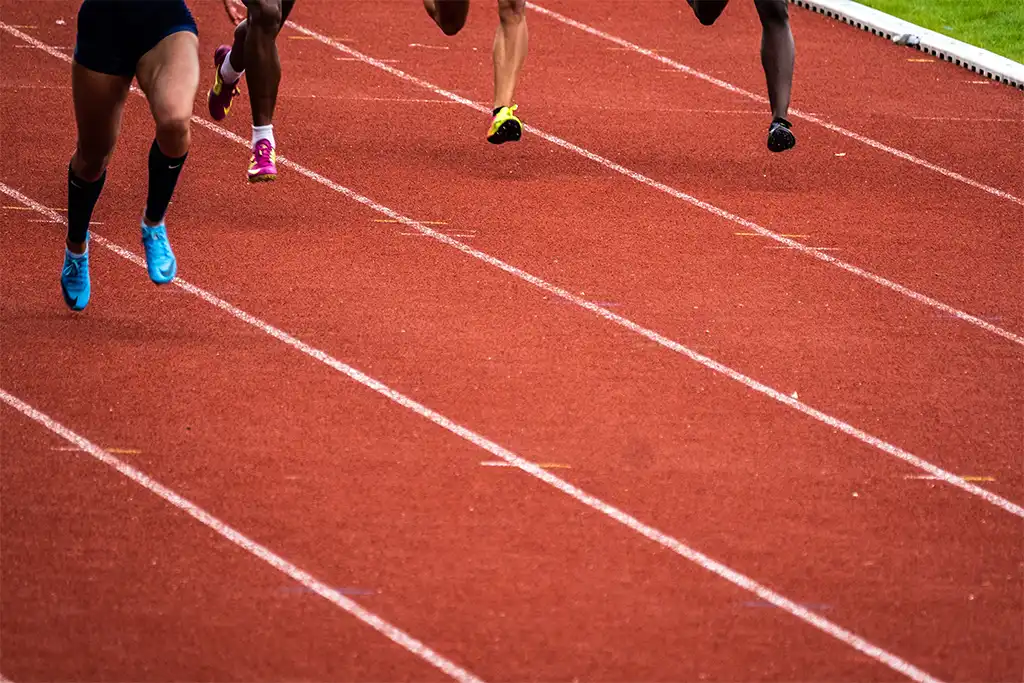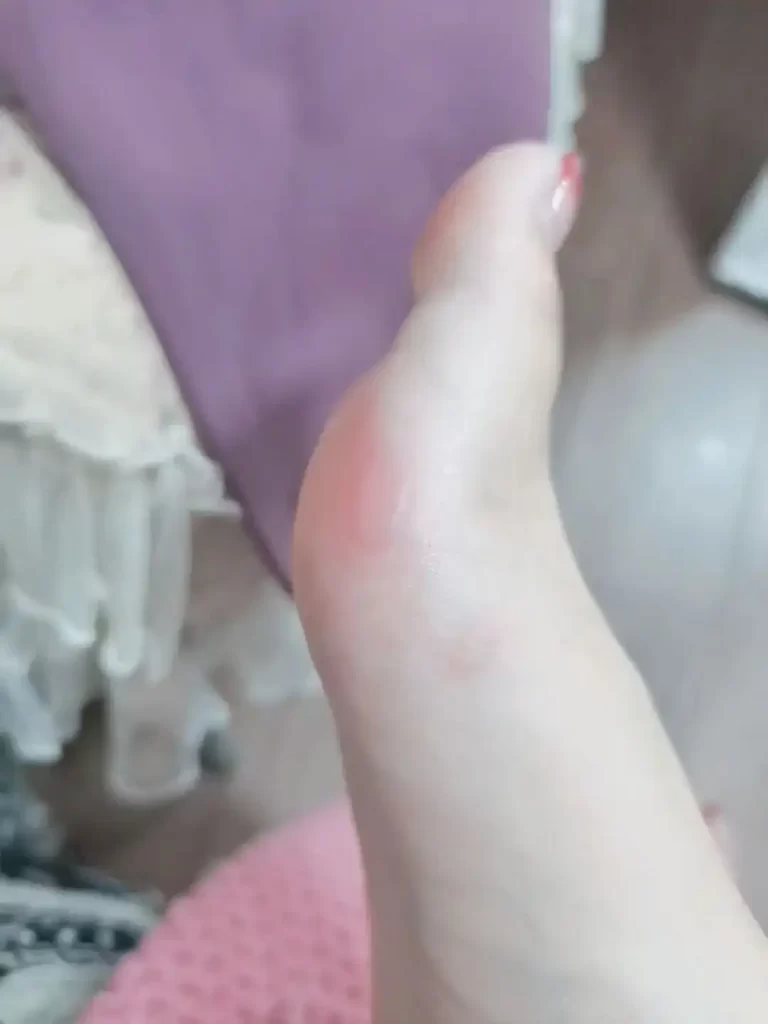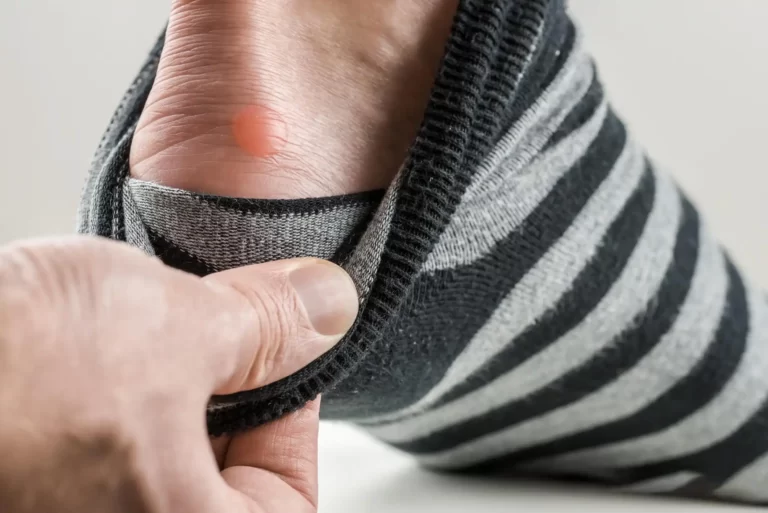Foot Blisters in Athletes: Essential Prevention and Treatment Strategies
Foot blisters are a common issue for athletes, caused by friction and moisture during physical activity. These painful blisters can disrupt training and performance, making prevention and treatment essential for anyone involved in sports. Understanding how to prevent blisters and how to treat them when they occur can help athletes maintain their performance and comfort.
Athlete’s foot blisters may develop between the toes or on the soles, often due to damp socks or poorly fitting shoes. Regular foot hygiene, including keeping feet dry and wearing appropriate footwear, can significantly reduce the risk of blisters forming. If blisters do arise, knowing how to care for them properly will promote quick healing and help prevent further irritation.
In this blog post, readers will discover effective strategies for preventing athlete’s foot blisters and the best ways to treat them when they occur. From choosing the right socks to applying home remedies, this guide offers practical tips for athletes seeking to keep their feet healthy and blister-free.
Understanding Foot Blisters in Athletes
Foot blisters are a common issue for athletes, often caused by friction and moisture. Knowing the causes, types, and risk factors can help in effective prevention and treatment.
Causes of Blisters
Blisters develop when skin gets damaged from friction. This can happen during activities like running, hiking, or playing sports. When an athlete’s foot rubs against shoes or socks, it can create heat. This heat leads to fluid-filled sacs forming under the skin.
Factors like wet conditions can worsen this issue. Moisture softens the skin, increasing friction risk. Tight or improperly fitted footwear can also play a role. Foot blisters can form quickly if athletes do not take care of their feet.
Types of Foot Blisters
There are several types of foot blisters. Friction blisters are the most common and occur from rubbing. Blood blisters can form when deeper layers of skin are affected, causing bleeding. Infection-related blisters may arise from athlete’s foot, which is a fungal infection.
Blisters can appear anywhere on the foot, but common spots include the heels, toes, and balls of the feet. The appearance can be clear, red, or even cloudy depending on the type. It is important for athletes to identify the type of blister for proper treatment.
Risk Factors for Athletes
Several factors increase the likelihood of foot blisters in athletes. High-impact sports, like running or soccer, often put more stress on the feet. A lack of proper foot hygiene can also lead to issues like athlete’s foot, which may cause blisters.
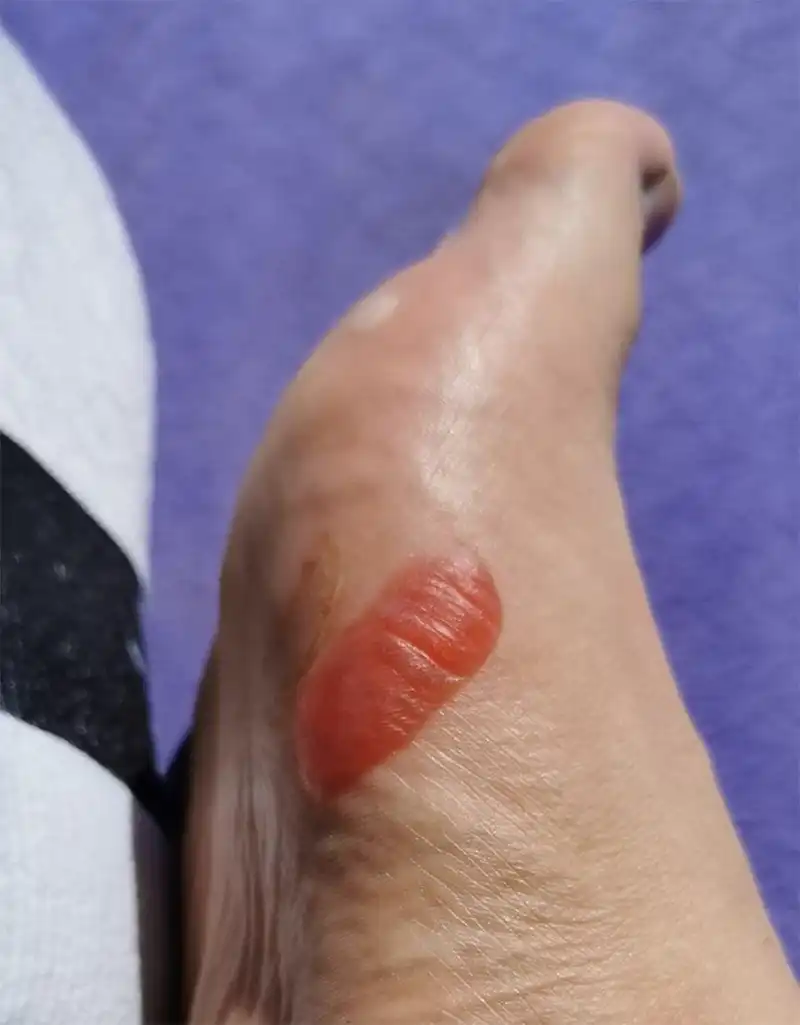
Improper footwear, such as shoes that are too tight or too loose, contributes to the problem. Athletes should invest in shoes that fit well and use moisture-wicking socks. Environmental factors, like heat and humidity, can further raise the risk of blisters developing. Taking these factors into account can help athletes stay blister-free.
Prevention Strategies
Preventing foot blisters in athletes involves careful attention to footwear, socks, skin care, and training techniques. By implementing specific strategies, athletes can minimize their risk of developing blisters during activities.
Proper Footwear
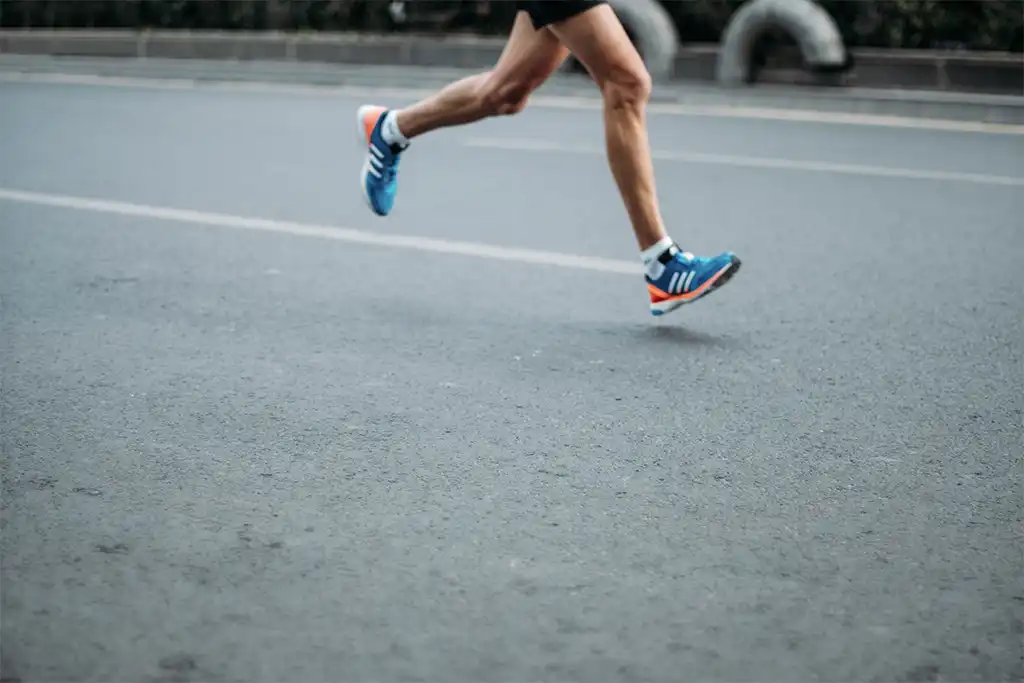
Choosing the right footwear is crucial. Shoes should fit well, providing support without being too tight. Athletes must consider the type of sport they engage in. For instance, runners should look for running shoes that allow for proper toe movement and cushioning.
Key points to consider:
- Width and Length: Ensure there is space at the toe to prevent friction.
- Material: Lightweight, breathable materials can reduce moisture build-up.
- Support: Shoes should provide the right arch support for the athlete’s foot type.
Regularly replacing worn-out shoes is also important. Old shoes lose their cushioning and support, which can increase the likelihood of blisters.
Socks and Insoles
The choice of socks is equally important in blister prevention. Athletes should opt for moisture-wicking fabrics that draw sweat away from the skin. Avoid cotton socks, as they retain moisture and increase friction.
Tip for choosing the right socks:
- Look for socks with cushioning in key areas to reduce impact and friction.
Insoles can also be beneficial. Using custom or cushioned insoles can help absorb shock and improve fit, reducing the likelihood of blisters. Athletes should experiment with different types of insoles to find what best suits their needs.
Skin Care and Hygiene
Maintaining good skin care and hygiene is essential to prevent blisters. Daily washing with soap and water helps keep feet clean and reduces the risk of infections. It’s vital to dry the skin thoroughly, especially between the toes.
Care tips include:
- Moisturize: Use a light moisturizer to keep skin hydrated, which can reduce friction.
- Inspect Feet: Regularly check for any signs of irritation or redness.
Athletes can also apply blister prevention products, like lubricants, on areas prone to chafing. Runners often use products like petroleum jelly on high-friction areas before heading out.
Training Techniques
Proper training techniques can significantly reduce the chance of blisters. Athletes should gradually increase their training intensity and duration. This helps the feet acclimate to new pressures and reduces the risk of friction.
Strategies to incorporate:
- Warm-Up: Always start with a warm-up to prepare the feet for activity.
- Footwear Change: When switching shoes, allow time for adaptation.
- Cool Down: A cool-down period can help reduce swelling and irritation post-activity.
Listening to the body is vital. If there is pain or discomfort, it’s important to take breaks and assess any potential issues before continuing training.
Treatment Measures
Effective treatment for foot blisters in athletes requires immediate actions to manage pain and protect the area, followed by advanced care methods for healing and prevention of future issues. Understanding when to seek medical attention can also be crucial for serious cases.
Immediate Actions
When a blister forms, quick care helps reduce pain and prevent infection. First, if the blister is intact, avoid popping it. The skin protects against germs. Clean the area gently with soap and water. After drying, apply an antibiotic ointment to minimize infection risk.
Cover the blister with a sterile bandage or blister pad. This protects it from friction and irritation during activities. Athletes should change the dressing daily or if it becomes wet or dirty. If blisters are caused by athlete’s foot, using an antifungal cream can help treat the underlying infection.
Advanced Care Options
If blisters persist or become painful, more advanced treatment may be required. In some cases, draining the blister might be necessary. This should only be done if it’s large and painful. Use a sterilized needle to puncture the edge and allow fluid to drain. Afterward, clean the area and apply an antibiotic ointment.
Additional treatments like soaking the feet in warm water with Epsom salt can help soothe irritation. Applying tea tree oil or hydrogen peroxide may reduce symptoms of athlete’s foot, aiding in blister healing. Wearing moisture-wicking socks and breathable shoes can prevent further friction and promote faster recovery.
When to Seek Medical Attention
Athletes should consider seeking medical help if blisters show signs of infection. These signs include increasing redness, swelling, or pus. If pain becomes severe or does not improve with home care, medical advice is necessary.
Also, athletes with diabetes or compromised immune systems should consult a doctor for any foot issues, including blisters. Professional evaluation ensures appropriate treatment and reduces the risk of complications. Regular check-ups can help maintain foot health for athletes engaged in rigorous activities.
Post-Treatment Recovery
Recovery after treating foot blisters is crucial for athletes. Proper care helps to ensure healing and prevent future blisters, such as athlete’s foot blisters. Focusing on protection, rehabilitation, and timing for a safe return to activity is essential.
Protection and Support
After treatment, it is important to protect the affected area to avoid re-injury. Athletes should consider using blister bandages, as they create a barrier, allowing the skin to heal. These bandages prevent friction and keep the area clean.
Footwear choice plays a significant role too. Wearing shoes that fit well and provide ample support can minimize pressure on the healing skin. Cushioned insoles can also help absorb impact, reducing irritation.
Additionally, keeping the foot dry is vital. Athletes can use antifungal powders to prevent athlete’s foot from developing in a damp environment. Routine care includes checking for signs of infection, such as increased redness or pus.
Rehabilitation Exercises
Rehabilitation exercises can begin once the blisters are healing. These exercises should focus on the foot and ankle to restore mobility and strength. Simple flexibility stretches, such as toe curls and ankle rotations, can be beneficial. They help maintain joint range of motion.
Strengthening exercises, such as calf raises, can aid in regaining muscle strength. Performing these on a flat surface or a small step is effective. Gradually increasing intensity ensures safety while rebuilding strength.
Balance activities, like standing on one foot, can also improve stability. This is key for preventing future injuries. Regularly incorporating these exercises into a routine promotes overall foot health.
Return to Activity Timeline
The timeline for returning to activity varies based on the severity of the blisters. Generally, athletes can resume light activity within a few days if there is no pain or significant discomfort. By then, blisters should be starting to scab over.
Full activity may take longer. Athletes should listen to their bodies and not rush back. A common guideline is to wait seven to fourteen days after treatment, depending on healing progress.
If blisters recur or if athlete’s foot symptoms appear, a longer recovery may be necessary. Athletes are advised to consult a medical professional if they have concerns about their recovery.
Role of Nutrition and Hydration
Nutrition and hydration play a crucial role in preventing foot blisters in athletes. Proper intake of nutrients helps maintain skin health and resistance to friction.
Key Nutrients for Skin Health:
- Protein: Essential for tissue repair and rebuilding skin after stress.
- Vitamin C: Important for collagen formation, enhancing skin strength.
- Zinc: Supports healing and helps maintain healthy skin.
Hydration is also critical. When athletes are dehydrated, their skin can become dry and more susceptible to blisters.
Hydration Tips:
- Drink water regularly throughout the day.
- Consider electrolyte drinks during long training sessions.
Athletes should monitor their hydration levels, especially in hot conditions. Signs of dehydration include fatigue, dizziness, and dark urine.
Recommended Daily Intakes:
- Water: Aim for at least 8-10 cups each day, adjusting for activity level.
- Protein: About 1.2 to 2.0 grams per kilogram of body weight, depending on intensity.
By focusing on proper nutrition and hydration, athletes can improve their skin’s resilience and reduce the risk of developing blisters.
Monitoring and Adapting Strategies
Monitoring and adapting prevention and treatment strategies for foot blisters is crucial for athletes. Evaluating their own conditions, receiving feedback, and making adjustments based on experiences can significantly improve their performance and comfort.
Self-Assessment Technique
Athletes should regularly assess their feet for any signs of blisters or irritation. This can be done after practices or competitions. Key aspects to check include:
- Redness or swelling: Indicates potential blister formation.
- Unusual pain: A sign to investigate footwear or activity levels.
- Skin texture: Look for roughness or cracks.
By keeping a journal of foot conditions, athletes can identify patterns related to specific shoes or activities. This information helps athletes make informed choices about their footwear and reduce the risk of blisters.
Feedback from Coaches and Medical Professionals
Receiving feedback from coaches and medical professionals is vital for an athlete’s health. Coaches can notice changes in performance, body language, or limping that may suggest foot issues. Regular check-ins can help athletes understand their needs better.
Medical professionals provide valuable insights on injury prevention. They can recommend customized insoles or orthotics, which may enhance comfort. Engaging with a sports physiotherapist can lead to tailored exercise regimens that bolster foot strength and resilience.
Adjusting Prevention and Treatment with Experience
As athletes gain experience, they can refine their prevention and treatment strategies. For instance, trial and error with different shoe types or sock materials might reveal the best combinations for blister prevention.
Additionally, athletes should adjust their routines based on environmental factors. Increased heat during summer may require changing socks more frequently to avoid moisture buildup. Keeping track of any successful methods used in previous events can aid in preventing issues during future competitions.
Flexibility and willingness to adapt will help athletes maintain foot health throughout their athletic endeavors.
Frequently Asked Questions
This section addresses common inquiries regarding foot blisters. It provides practical advice for treatment and prevention, tailored specifically for athletes.
What are the most effective home remedies for treating blisters on feet quickly?
For quick relief, some effective home remedies include applying tea tree oil or hydrogen peroxide. These substances can help reduce infection risk and promote healing. Keeping the blister clean and covered can also prevent further irritation.
What strategies can athletes use to prevent foot blisters during sports?
Athletes can prevent blisters by wearing properly fitting shoes and moisture-wicking socks. It is also helpful to apply blister prevention tape or pads on high-friction areas of the foot. Regularly changing out of sweaty or wet socks can reduce moisture buildup.
How can one treat a blister on the foot to expedite healing overnight?
To promote faster healing, the blister should remain intact if possible. Cleaning it gently and covering it with a sterile bandage helps. Applying an antibiotic ointment can also protect it overnight, while keeping weight off the foot allows for quicker recovery.
What do healthcare professionals recommend for treating unexplained blisters on feet?
For unexplained blisters, professionals often suggest seeking medical advice to determine the underlying cause. Keeping the area clean and protected is vital. If blisters persist or worsen, contacting a healthcare provider for further evaluation is necessary.
Which treatments are considered best for foot blisters resulting from basketball or similar sports?
For foot blisters from basketball, treating them with an antifungal product can be effective, especially when combined with good hygiene practices. Protective bandages can also help shield the blister during play. Moisture management is crucial to avoid reoccurrence.
How should one manage friction blisters on feet caused by excessive walking?
To manage friction blisters, the first action is to stop the activity that caused it. Keeping the blister clean and covered is essential. Apply a blister pad or dressing to protect it while still allowing it to breathe, reducing the chance of infection.

